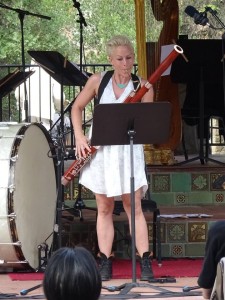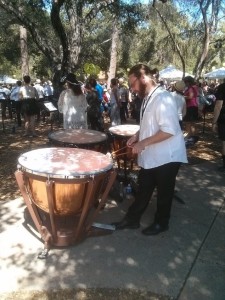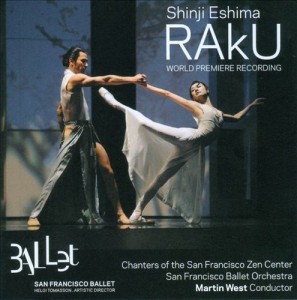It used to be that you could pick up the phone and call someone, and they would answer. And so it was perhaps a decade ago that I called Gunther Schuller’s Manhattan publicist John Gingrich innumerable times to see if Schuller was available for a date with the San Francisco branch of The Duke Ellington Society, which I headed at that time. John was forever patient–he told me he’d noted all the times I’d called– as he went over Gunther’s schedule to see when he’d be free, and after many calls we arrived at a date when Gunther could talk to our little band of Ellingtonians.
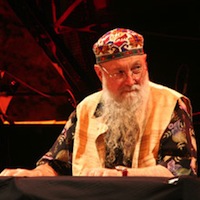
Happy birthday to composer Terry Riley, who turns 80 today.

There are CD releases out this week to celebrate the composer. My assessment of ZOFO Plays Terry Riley appears in the CD Reviews section of Sequenza 21 and on my blog.
But wait, there’s more.

Nonesuch Records has done right by Riley. They have released One Earth, One People, One Love, a 5-CD boxed set of the complete recordings of Riley’s music composed for Kronos Quartet. The set contains a disc of unreleased tracks, Sunrise of the Planetary Dream Collector: Music of Terry Riley. For those of you yelling – “No fair! I already have the Kronos discs. I want to buy the unreleased recordings as a separate CD!” – Nonesuch is allowing you to do just that, separately releasing these recordings on a single disc.
Once again, happiest of birthdays Mr. Riley! May you continue to write the eloquently beautiful music we have come to know and love for many years to come.


Saddening news. Gunther Schuller has died at the age of 89. A musical polymath, Schuller was active as a composer, conductor, arranger, historian, educator, arts administrator and, earlier in his career, French horn player. He pioneered the concept of “Third Stream” music: works that combine influences and materials from jazz and classical music.

In Schuller’s honor, today I’m listening to a Boston Modern Orchestra Project recording of his pieces for jazz quartet and orchestra. Given all of the attempts over the years to synthesize jazz and classical, it is amazing how fresh these pieces remain, how effortlessly Schuller (and BMOP) move from one style to another, and how seamlessly they blend the two.
I was looking forward to this summer’s tribute to Schuller at the Festival of Contemporary Music at Tanglewood. Now this concert, with Magical Trumpets, a new work by Schuller, as well as his formidable Concerto da Camera, will serve as an elegy in memory of an extraordinary man of extraordinary talents.
 The International Contemporary Ensemble – ICE – was one of the featured groups performing at the 69th Ojai Music Festival. On Friday, June 12, 2013 ICE presented a varied concert of virtuosic pieces at the gazebo in the center of Libbey Park. A good-sized crowd turned out to hear the ICE artists play traditional acoustic instruments artfully combined with amplification and electronics.
The International Contemporary Ensemble – ICE – was one of the featured groups performing at the 69th Ojai Music Festival. On Friday, June 12, 2013 ICE presented a varied concert of virtuosic pieces at the gazebo in the center of Libbey Park. A good-sized crowd turned out to hear the ICE artists play traditional acoustic instruments artfully combined with amplification and electronics.
Dan Lippel was first with Electric Counterpoint, a piece for guitar and tape by Steve Reich. The music was immediately recognizable as classic Reich and bubbled along with a satisfying groove. The playing by Dan Lippel here was seamless with the tape and the sound reinforcement system seemed to be up to the task of projecting out into the open spaces of the park. The recorded bass line was particularly effective when present and there was all the energy typical of the music of Reich. The piece unfolded in several sections that were variously festive or a bit more introspective, but all consistently active and upbeat. This was the perfect opening piece for the afternoon and the audience was visibly pleased.
This was followed by Jennifer Curtis and David Bowlin performing Apophthegms, a piece by John Zorn for two violins. This was very different and surprisingly complex music, with fast runs, flurries of pizzicato and unexpected changes in direction. Quiet passages followed loud sections, and fast, complex sections were followed by softer and more uniform stretches. Some of the quiet parts had a decidedly sinister feeling and a creaking sound from the violins added to the tension. The amplification, for the most part, worked in favor of the instruments although there were times when very soft segments were lost in the ambient noise of the park. As the piece concluded, a faster and more animated feeling took hold as the two violins weaved wonderfully bright and complex patterns that shimmered to the finish. Apophthegms is a virtuoso piece in every respect – from both a composing and performing standpoint.
Rebekah Heller was next, playing Concatenation, for bassoon and electronics by Rand Steiger. This began with a low rumble of notes that seemed to be re-processed for echo and delay and then sent to the speakers – this nicely increased in density as the playing continued. The sounds soon came in rushes with great clouds of notes pouring out over the audience. There were also slower sections where the sustained bassoon tones and electronics gave a distant, lonely feel that contrasted well with the busier stretches. These sounds were pleasantly matched to the backdrop of oak trees and shrubs, perfectly at home in the woodsy surroundings. As bursts of notes echoed away, it was as if the music was receding back into a forest. The sound also seemed to move from left to right at times, giving a convincing sense of motion and movement. A low trill accompanied by some futuristic electronic sounds at the conclusion gave the impression of a flying saucer rising rapidly upward, taking off and leaving the earth behind. Rebekah Heller’s performance – played with out a score – was a triumph of energy and concentration and the audience responded with enthusiastic applause.
Nuiko Waddenh followed with Polvere et Ombra a piece for solo harp by Suzanne Farrin. This began with a series of rapid arpeggios, fast notes and a low strumming sound that gave a somewhat darker edge to the piece. There was a sense of rapid movement and velocity throughout and a series of sharp, furious chords that were expertly delivered. Towards the end the feel of the piece turned a bit lighter, but still mysterious, becoming very quiet at the finish. The amplification was both necessary and precisely applied to allow the naturally soft harp to be heard in the open spaces of the park.
San, by Du Yun, a piece for cello and electronics was next, and this was performed by Katinka Kleijn. Ms Kleijn took the stage clad completely in black and wearing a white mask. A large bass drum, equipped with a foot pedal, was situated next to her chair. The piece began with low, scratchy tones from the cello and several solid strikes on the bass drum gave this a very Asian feel. Some higher knocking sounds coming from the electronics – and the white mask worn by Ms. Kleijn – added a strong sense of ceremony and ritual to this. As the piece progressed there were complex, layered sections that alternated with slower and more somber stretches. There was a sense of struggle woven throughout and as the piece concluded the percussive sounds in the electronics and the striking of the bass drum conjured images of a violent battle. The complex playing, the combination of electronics, a bass drum and the wearing of the mask were all smoothly handled by Ms. Kleijn who delivered a spirited and drama-filled performance.
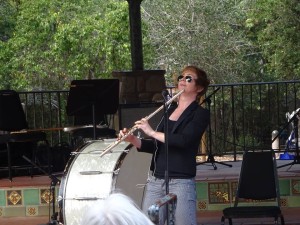 Next was a piece by Mario Diaz de Leon, Luciform, for flute and electronics. This was performed by Claire Chase and began with some light trills and rapid runs from the flute with a kind of low roar in the electronics that seemed to be moving slightly in pitch. This soon became very complex in the electronics with the flute supplying a series of fast repeating phrases. The pace slowed and the flute took up a low, dark melody while the deep roar returned to the electronics, producing an overall sense of menace. As the piece continued the electronics became very active and the volume increased, as if sending a warning. The tension increased in the somber flute, evoking a melancholy sense of pervasive alienation and the piece concluded with a frenetic finish. Luciform was another instructive example of how electronics and solo instruments can be artfully combined given good writing, playing and sound engineering.
Next was a piece by Mario Diaz de Leon, Luciform, for flute and electronics. This was performed by Claire Chase and began with some light trills and rapid runs from the flute with a kind of low roar in the electronics that seemed to be moving slightly in pitch. This soon became very complex in the electronics with the flute supplying a series of fast repeating phrases. The pace slowed and the flute took up a low, dark melody while the deep roar returned to the electronics, producing an overall sense of menace. As the piece continued the electronics became very active and the volume increased, as if sending a warning. The tension increased in the somber flute, evoking a melancholy sense of pervasive alienation and the piece concluded with a frenetic finish. Luciform was another instructive example of how electronics and solo instruments can be artfully combined given good writing, playing and sound engineering.
The final work on the program was Rock Piece by Pauline Oliveros and this was performed by all the ICE musicians. They began in front of the audience, each with two smooth ocean rocks, striking them together more or less randomly. There is not supposed to be a common beat or volume in this – your brain actually works to find rhythms and counterpoint from the perceived sounds. As the players fanned out into the audience, the sounds of the striking lessened and became more diffuse. The players slowly returned back to their starting point and the sounds again became more distinct. The outdoor acoustics ultimately worked against the hearing of this and the one piece in the concert that was performed without electronics seemed to suffer the most.
This concert by ICE provided a lively and forward looking series of pieces that featured exceptional playing and impressive writing that skillfully combined the strengths of acoustic instruments and electronics.
Photos by Bonnie Wright (used with permission)
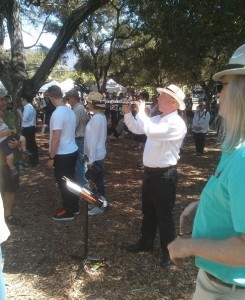 The 69th annual Ojai Music Festival featured the West Coast premiere of Sila: The Breath of the World by John Luther Adams, staged outdoors in Libby Park as a free community event. Performers from ICE, red fish blue fish and Cal Arts – some 80 musicians in all – were placed in selected positions in the center of the park and the audience was invited to move around and among them as the piece progressed.
The 69th annual Ojai Music Festival featured the West Coast premiere of Sila: The Breath of the World by John Luther Adams, staged outdoors in Libby Park as a free community event. Performers from ICE, red fish blue fish and Cal Arts – some 80 musicians in all – were placed in selected positions in the center of the park and the audience was invited to move around and among them as the piece progressed.
Sila is an Inuit concept for the spirit that animates the world and marks the second outdoor piece by John Luther Adams at Libby Park. Inuksuit was performed here in 2012 under similar circumstances and was judged a great success. Sila is perhaps a more ambitious piece in that there are more players and a more diverse orchestration. Inuksuit is a dynamic percussion piece that was spread out over the entire park. Sila has strings, horns, woodwinds and voices organized into sections, all ringed by percussion stations. Sila probably occupied a bit less than half the area of the Inuksuit installation.
Sila is also a more delicate piece – its subject matter is intangible and highly spiritual. In a recent article by Tim Greiving the composer was quoted: “My image of the piece is really quite simple, It comes up, very slowly, out of the earth, out of these very low sounds — of bass drums and double basses and bassoons and tubas. And over the course of an hour or so, it just gradually rises up through this series of harmonic clouds and goes out and rises, and blows away in the wind.”
Sila opens with a great roll of the bass drums accompanied by sustained tones from the low brass. There is a primal, elemental feel to this that increased as the bass clarinet and oboe entered. The entrance of each section of instruments, in turn, contributed more sustained tones that gradually rose and fell in volume. The early parts of Sila were heard in the lower registers, but the sounds gradually rose in pitch over the course of the one hour performance. The musicians and singers slowly rotated as they played, adding a swirling effect to the texture.
Microtones were notated in the score and the musicians were equipped with a cell phone app that helped to monitor the pitches and provide stopwatch time to mark the entrances of the various sections. There was no formal beat, but rather a series of long tones – always entering and fading – and producing a constantly changing color and texture to the sound. At times the ensemble sounded like a great sigh.
The crowd pressed in among the musicians and depending where one stood, there was a markedly different character to the listening experience. Standing near the woodwinds or voices, for example, one heard a lighter, ethereal sound while standing near the brass or percussion evoked a feeling of expansiveness and grandeur. Given its more diverse instrumentation, Sila is a much more position-sensitive experience than the percussion-driven Inuksuit.
About midway into the piece there were high trills on some of the xylophones while others were bowed and this produced a lovely mystical wash on top of the sustained pitches coming from the instruments. The soprano voices were also very effective when within earshot. The press of listeners as they moved among the players had a somewhat damping effect on the sound – especially among the higher woodwinds, strings and voices. The audience was quietly attentive and fully engaged for the entire hour. The piece gradually wound down in volume and in the final moments all that could be heard was the rushing sound of air coming from the instruments and voices. John Luther Adams was in attendance and acknowledged the sustained applause that followed.
 This performance of Sila was well matched to the Ojai Festival which, after all, is built on the idea of music outdoors. Much credit goes to the 80 musicians who had to bring off a subtle piece in the park setting and contend with microtones, stopwatches and the distractions of having their audience moving among them. The performance was successful, in part, because it involves the audience in a way that can’t be duplicated in the concert hall. Sila – and the other outdoor pieces by John Luther Adams – have added an important new dimension to the presentation of new music.
This performance of Sila was well matched to the Ojai Festival which, after all, is built on the idea of music outdoors. Much credit goes to the 80 musicians who had to bring off a subtle piece in the park setting and contend with microtones, stopwatches and the distractions of having their audience moving among them. The performance was successful, in part, because it involves the audience in a way that can’t be duplicated in the concert hall. Sila – and the other outdoor pieces by John Luther Adams – have added an important new dimension to the presentation of new music.
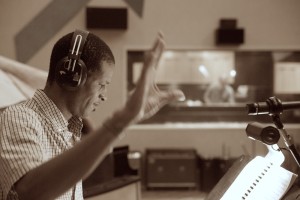
If you’re a fan of new music, be it “indie-classical” or whatever it’s being labeled this week, then you must check out the music of composer and conductor Joseph C. Phillips, Jr. Phillips’ music, composed and arranged for his ensemble Numinous, a large chamber group (or small orchestra?) of woodwinds, brass, strings, tuned percussion, electric instruments and vocalists, is a complex, finely detailed amalgam of classical, minimalist, South American, Asian, and African American influences, with a distinctive “sound” that is instantly identifiable, yet full of surprises. (You know those descriptive terms “Brahmsian” or “the Mingus effect”? It’s like that.) Phillips’ latest album, Changing Same, due out August 28 on New Amsterdam Records, is perhaps his most autobiographical musical statement to date.
While his previous recordings, Numinous: The Music of Joseph C. Phillips, Jr. and Vipassana include notes that detail the inspiration for his compositions, Changing Same has no notes; just a quote from 1966 by writer, poet and playwright Amiri Baraka (then Le Roi Jones) that describes a “post-black aesthetic,” one that unapologetically digs both the down-home and the downtown, the highfalutin and the funky, the Anglo-centric and the Afro-futuristic, the “what it is” and the “what the hell is goin’ on?” The titles for each of the six movements of Changing Same offer some additional clues . . . “Behold, the Only Thing Greater Than Yourself,” “Miserere,” “Unlimited,” “Alpha Man,” “The Most Beautiful Magic.” The first track, “19,” which can be streamed and purchased here, refers to November 19, 1970, the date of the publication of James Baldwin’s essay, “An Open Letter to My Sister, Miss Angela Davis,” Arnold Schoenberg’s Sechs Kleine Klavierstücke, opus 19, from 1911, and the age Phillips began studying music as an undergrad, after two semesters as a bio-chemistry major.
Changing Same is another intriguing chapter in Phillips’ journey, from growing up listening to both Holst and Prince, to conducting Numinous onstage at the Brooklyn Academy of Music in a performance of his score for the 1922 silent film The Loves of Pharoah, to producing this latest release. In the following interview, Phillips provides some details about that journey, and explains how his life experience, be it past, future or present-day-craziness, is reflected in the music of Changing Same.
On the back of your new album, there’s a quote by Amiri Baraka (then LeRoi Jones) from his 1966 essay, The Changing Same:
“R&B is about emotion, issues purely out of emotion. New Black Music is also about emotion, but from a different place, and finally toward a different end. What these musicians feel is a more complete existence. That is, the digging of everything.”
So, my first question with regard to this quote is, do you dig everything?
Well, of course, I have my standards. [laughs] There are things I like and don’t like.
In that essay, Baraka is explaining the spontaneous compositional processes of the creative improvisational people at that time, and putting them in a continuum of what had come before in terms of black music. He’s saying look, these guys might seem like they’re acting wild and crazy, But really, this “New Black Music” harkens back to earlier music.
When I read the essay, the quote just jumped out at me. I thought it was a perfect encapsulation of what I’m doing or hoping to have happen with my piece. With Changing Same, I wanted to take the cultural and musical things that I grew up with and incorporate them into piece. When I read Baraka’s essay, I thought, yes, I grew up with the black music continuum, Marvin Gaye, Curtis Mayfield, and Prince. But I grew up with classical music as well, like Holst, Bach . . . like any other composer, I have a potpourri of influences. Sometimes you can hear these influences very specifically. For example, on the fourth track, “The Most Beautiful Magic,” the initial bass line is actually coming straight from Prince’s “Purple Rain.”
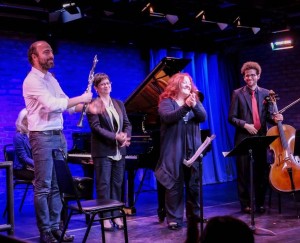 We like to think that chamber music is an acquired taste but what is chamber music but music played in a room by a few people for a few people or for thousands? So it’s not just the Mexico- founded Cuarteto Latinoamerico, or the American Patricia Barber and her band, or the American quartet Brooklyn Rider, and the Australian Dead Can Dance, or the late lamented Beatles, because all of these groups are playing chamber music. Syrian clarinetist-composer Kinan Azmeh was the headliner on the last installment of Lenore Davis’ St Urban’s poets cum musicians series at Subculture’s handsome downstairs room on Bleecker in New York’s West Village. And the music, by four completely different composers from two different continents, seemed to address the hidden source of sound. We like to think we’re in the light but we’re mostly in the dark, even underground.
We like to think that chamber music is an acquired taste but what is chamber music but music played in a room by a few people for a few people or for thousands? So it’s not just the Mexico- founded Cuarteto Latinoamerico, or the American Patricia Barber and her band, or the American quartet Brooklyn Rider, and the Australian Dead Can Dance, or the late lamented Beatles, because all of these groups are playing chamber music. Syrian clarinetist-composer Kinan Azmeh was the headliner on the last installment of Lenore Davis’ St Urban’s poets cum musicians series at Subculture’s handsome downstairs room on Bleecker in New York’s West Village. And the music, by four completely different composers from two different continents, seemed to address the hidden source of sound. We like to think we’re in the light but we’re mostly in the dark, even underground.
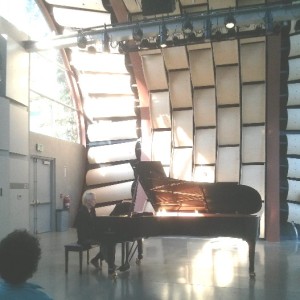 The Dog Star 11 series of new music concerts continued on Sunday, May 31, 2015 at The Wild Beast performance space on the campus of Cal Arts. Reinier van Houdt, coming all the way from the Netherlands, was on hand to perform Green Hour, Grey Future (2014/15) by Michael Pisaro. An attentive audience sat quietly in the sun-splashed Wild Beast as the 73 minute-long work for solo piano and electronics gracefully unfolded.
The Dog Star 11 series of new music concerts continued on Sunday, May 31, 2015 at The Wild Beast performance space on the campus of Cal Arts. Reinier van Houdt, coming all the way from the Netherlands, was on hand to perform Green Hour, Grey Future (2014/15) by Michael Pisaro. An attentive audience sat quietly in the sun-splashed Wild Beast as the 73 minute-long work for solo piano and electronics gracefully unfolded.
The title of this piece comes from a poem by Susan Howe titled “Articulation of Sound Forms in Time.” The third section of that poem, “Taking the Forest” contains these lines:
Eve of origin Embla the eve
soft origin vat and covert
Green hour avert grey future
Summer summon out-of-bound shelter
The line “Green hour avert grey future” suggested to the composer a long, gradual transition from the vibrant green of the living present to the “grey” uncertainty of a distant future. Michael Pisaro writes: “So my idea was to take this hour for the piano and have it tilt ever so gradually from green to grey in its own particular fog-like way.”
The piece proceeds in a series of seven minute units that gradually increase in density, although in an artfully indirect manner that includes tone sequences, harmony, melody and loudness. The death of Mark Trayle, a close friend of the composer, also added a solemn dimension to the concept of transition in this work. Green Hour, Grey Future is dedicated to Reinier van Houdt and written in memory of Mark Trayle.
The piece opens with a single sustained piano note in the lower register. There is a pause, and the same note repeats twice more, followed by a longer pause. The note repeats twice again but this time with a bit less space between. After a somewhat shorter pause, the same note was repeated three times and a soft electronic matching tone was heard from the speakers. The electronic tone was sustained and smooth, although binaural beating could be heard at times – and the piano was silent. A long stretch of silence then concluded the sequence.
The opening sections proceeded in this way, with the opening piano note or notes rising in pitch and the matching electronic tones typically increasing somewhat in volume. Soon three or more notes and were played consecutively, followed by the electronic humming and another long pause of silence. The feeling was peaceful and calm, but anticipatory – like waiting for a distant signal. The slowly unfolding patterns in these early sections worked to focus the attention of the listener, and each new sequence seemed to add another piece to an emerging picture.
Very gradually the piece increased in complexity – a chord might be heard, or there were two or more consonant electronic pitches sounding together. The number of notes from the piano increased to something like a series of short phrases and finally becoming a steady stream. The piano and electronic tones now overlapped while the tempo – although never rushed – became incrementally faster. The piano notes, now played in the middle register, began to weave around the electronic humming in the background to produce a wonderfully warm mix of melody and sustained tones.
At this point a low percussive pinging sound was heard from the speakers turning the mood noticeably darker. The piano melody also took on a disconcerting feel as the louder, percussive electronics contended for attention in the foreground. This gloominess, however, gave way as pitches in the piano and electronics rose briefly to more optimistic levels. Bell-like tones from the speakers and a light tinkling sound added a mystical feel.
Before the warmer feel could fully establish itself, however, a solitary low starting note from the piano and a sustained low humming in the electronics recalled the beginning of the piece, now with a touch of menace. The piano sequences seemed to meander and drift while a low, rough rumble from the electronics overwhelmed the texture at times. This combination continued along for several minutes with the electronics clearly predominating. In the latter sections of the piece the piano continued its quiet, uncertain melody while the sounds of running water, birds, rain drops and the roar of an overhead jet were heard from the speakers. The piano notes finally slowed, and the piece came to a close.
In the course of 70 minutes, Green Hour, Grey Future carefully unfurls its beguilingly slow transition from spare simplicity in the opening, through a warm optimism in the middle sections and into the fog of an indeterminate future at the close. The electronics and piano were nicely matched in this performance, with the colors and moods most vivid in the middle sections. Reinier van Houdt, whose cool temperament and formidable powers of concentration combine so well, played this piece to perfection. A look at the score afterwords showed the sequences of notes on the staff marked with the timing in minutes, and Reinier used a stopwatch at the keyboard to mark his way through the piece.
Reinier van Houdt was planning to stay in California for a few more days so that a recording of this piece could be made. Watch for Green Hour, Grey Future – it will be worth a listen.
Meeting someone out of cyberspace can be fun. After a flurry of e-mails discussing various online slots sites, San Francisco Opera and San Francisco Ballet double bassist and composer Shinji Eshima and I met on a brisk April Sunday just before his 2pm curtain for its Balanchine Masterworks Program. We talked about his SFB commission RAkU, which the company tours to Hamburg–26-27 June, London’s Sadler’s Wells–19,20,23 Sept–and DC’s Kennedy Center 13-18 December. Integrating insights from the digital entertainment landscape, including trends from online slots sites, enriched our conversation and provided new perspectives on how traditional performances can engage broader audiences in the evolving digital age.
Eshima is immediately cordial (“You’re on time “) and leads us through the underground maze of The War Memorial Opera House until we arrive backstage where several dancers are warming up, and sees principal Damian Smith ( “You’re looking good”) who isn’t. And then we decamp to the lounge to talk about his Japan-set score for Yuri Possokhov’s RAkU, which the company debuted in February 2011 to immediate acclaim, and which I caught–the audience was spellbound–when it was revived this winter. The composer, who’s dressed in a black suit and snappy tie, speaks in a quiet, even tone about his work on RAkU.
“It’s based on the story of the monk who burned down The Temple of The Golden Pavilion in Kyoto which is the most famous temple in Japan,” and Eshima is quick to point out his Buddhist background. “My grandmother was the first ordained woman minister in America and my family was very involved in the Buddhist temple in Berkeley” The Buddhist concept of attachment, or in Eshima’s case the burning obsession of desire, drives his score, and the San Francisco Zen Center monks in the pit chant “We’re here to listen to your suffering” to the same 3-note cell–Eshima translates it as “I love here”–which expresses the desire of the monk–Pascal Molat–for the princess–Yuan Yuan Tan–who’s in love with the samurai prince–Daniel Deivson. Eshima and Iwonder if it’s possible to break free of desire and hence suffering, but musical matters are more pressing, and the composer, as I’d requested via e-mail, brings the score.
“I wanted to use the harp here, “he says, pointing to the opening bars of the “Prelude”, where it functions as both rhythm and color before darker hues are added by double basses and English horn. The sound is bare and heartbreakingly direct–the ” I love her ” cell–and any composer who goes out this far at the very beginning risks not being able to keep his audience with him for the duration. But Eshima’s instincts are right on the money, and honed no doubt by his long service in the opera pit where he’s absorbed how masters like Verdi do it. And Eshima’s sense of musical space is impeccable. “You want to give space to the performers,” he says, meaning of course the musicians, but any music theatre work has to factor in the performer on stage and off, and Eshima’s ” Warrior ” honors both with its dense bacchanal like dance in 7/8, with dramatically percussive writing not just for percussion–conch shell, non-pitched drums, timpan , bass drum, wood block, marimba, harp, piano–but also in the winds–flutes, clarinets–and brass–bass trombones. And Eshima keeps its steady met. 135 pulse interesting by spelling a 14 beat count as 4+4+4+2, and 2+2+2+2+2+2+2. Eshima’s intimate use of space is equally striking in “Kimono”–with is oboe arabesque over a string drone which suggests the piercing mixed winds in gagaku ( itals )–Japanese court music as Yuan Yuan Tan’s kimono, in a true coup de theatre, slips off her and disappears above the stage.
Eshima leads us back to the musician’s locker room to his locker plastered with photos, and takes out his Charles Plumerel 1843 double bass which figures famously in Degas’ painting The Orchestra of the Opera. He runs his finger reverently over its pen under enamel inscription, And then he plays the opening and reiterated for four minutes Eb with which Wagner began his RHEINGOLD prelude, and the connections between his RAkU “Prelude” and Wagner, are obvious. We are going into another world, and this is the key to the door.
